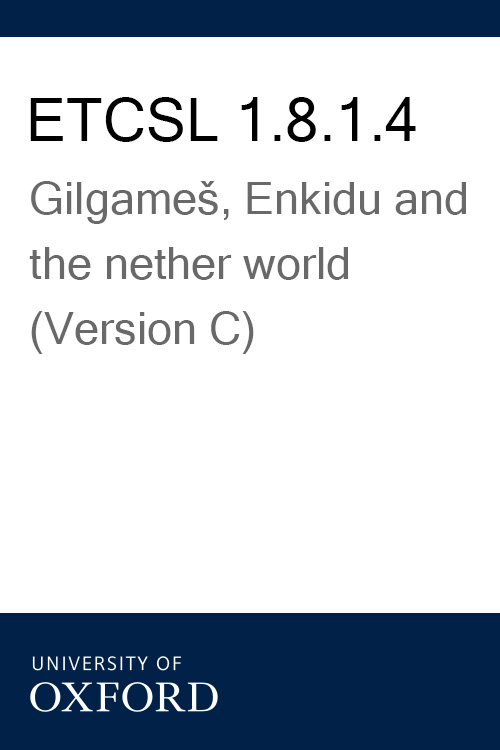Text summary
From: Website · Jeremy Allen Black · 1997

Text: Full Translation, Collation (partial)
Sumerian ⟶ English a
| Line # | Translation |
|---|---|
| [Version C] A third version from Urim (UET 6 60) | |
| 1-10 | They returned to Unug, they returned to their city. He entered outfitted with tools and armaments, with an axe and a spear, and deposited them in his palace happily. Looking at the statue, the young men and women of Unug and the old men (?) and women of Kulaba rejoiced. As Utu came forth from his bedchamber, Gilgameš (?) raised his head and told them (?): "My father and my mother, drink clean water!" Midday had hardly passed when they touched the statue's (?) crown. |
| 11-16 | Gilgameš threw himself down at the place of mourning, he threw himself down for nine days at the place of mourning. The young men and women of Unug and the old men (?) and women of Kulaba wept. As soon as he had said that, he repulsed the citizen of Ĝirsu. "My father and my mother, drink clean water!" |
| 17 | Warrior Gilgameš, son of Ninsumun, sweet is your praise! |
| Source(s) a Black et al., "ETCSL 1.8.1.4: Gilgameš Nether World [Version C]." | |
Record notes
About these data
| Catalog no. | ETCSL 1.8.1.4 (C) |
| Retrieval date | Jun. 15, 2020 |
| Copyright | ETCSL @ Oxford |
Cite this page
OMNIKA Foundation Contributors. "ETCSL 1.8.1.4 (Version C): Gilgamesh, Enkidu and the Nether World." OMNIKA – World Mythology Index, OMNIKA Foundation, 15 Jun. 2020, omnika.org/stable/632. Accessed 5 Jan. 2026.
OMNIKA (2020, June 15). ETCSL 1.8.1.4 (Version C): Gilgamesh, Enkidu and the Nether World. Retrieved from https://omnika.org/stable/632
OMNIKA Foundation Contributors. "ETCSL 1.8.1.4 (Version C): Gilgamesh, Enkidu and the Nether World." Las Vegas, NV: OMNIKA Foundation. Created June 15, 2020. Accessed January 5, 2026. https://omnika.org/stable/632.





